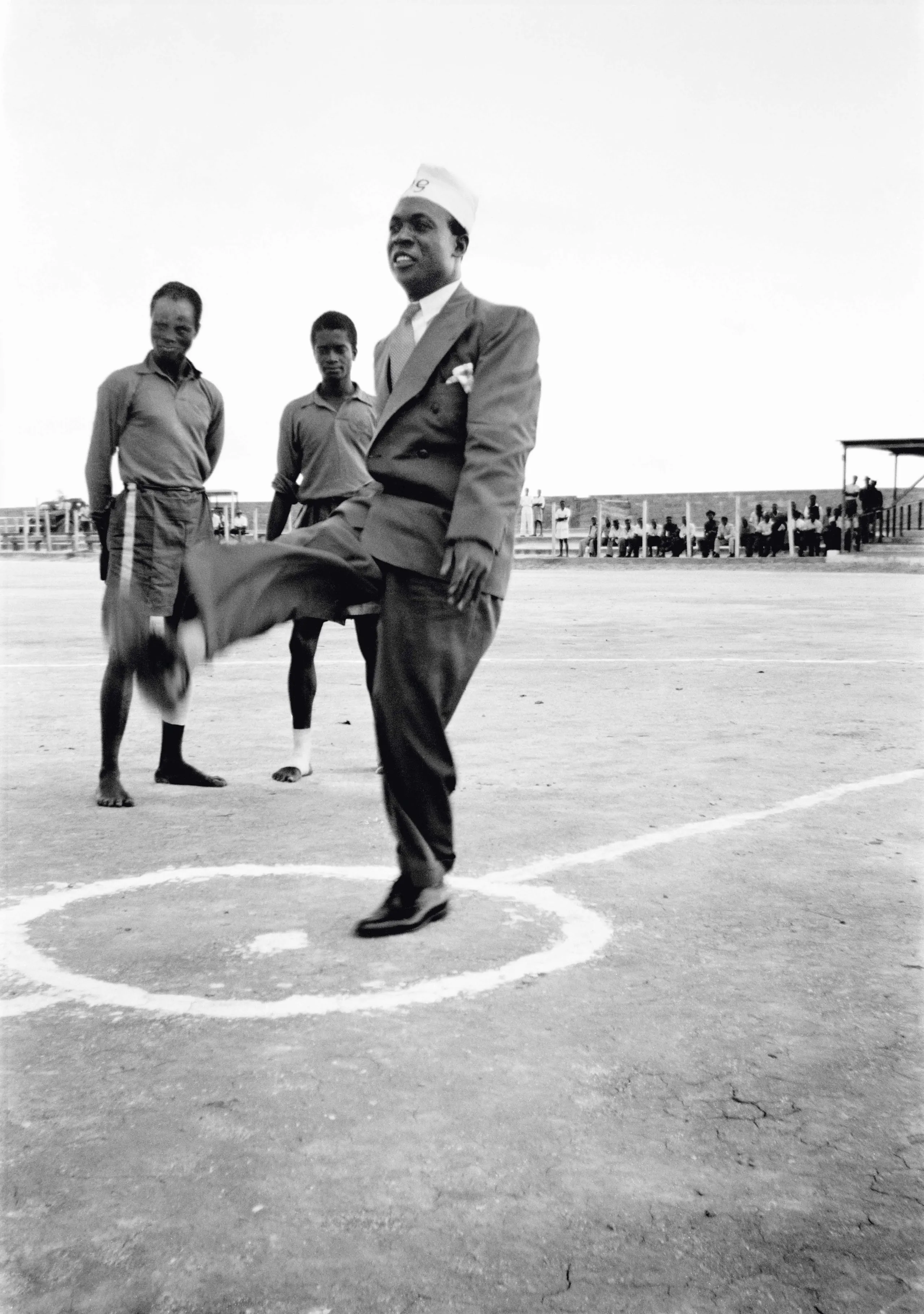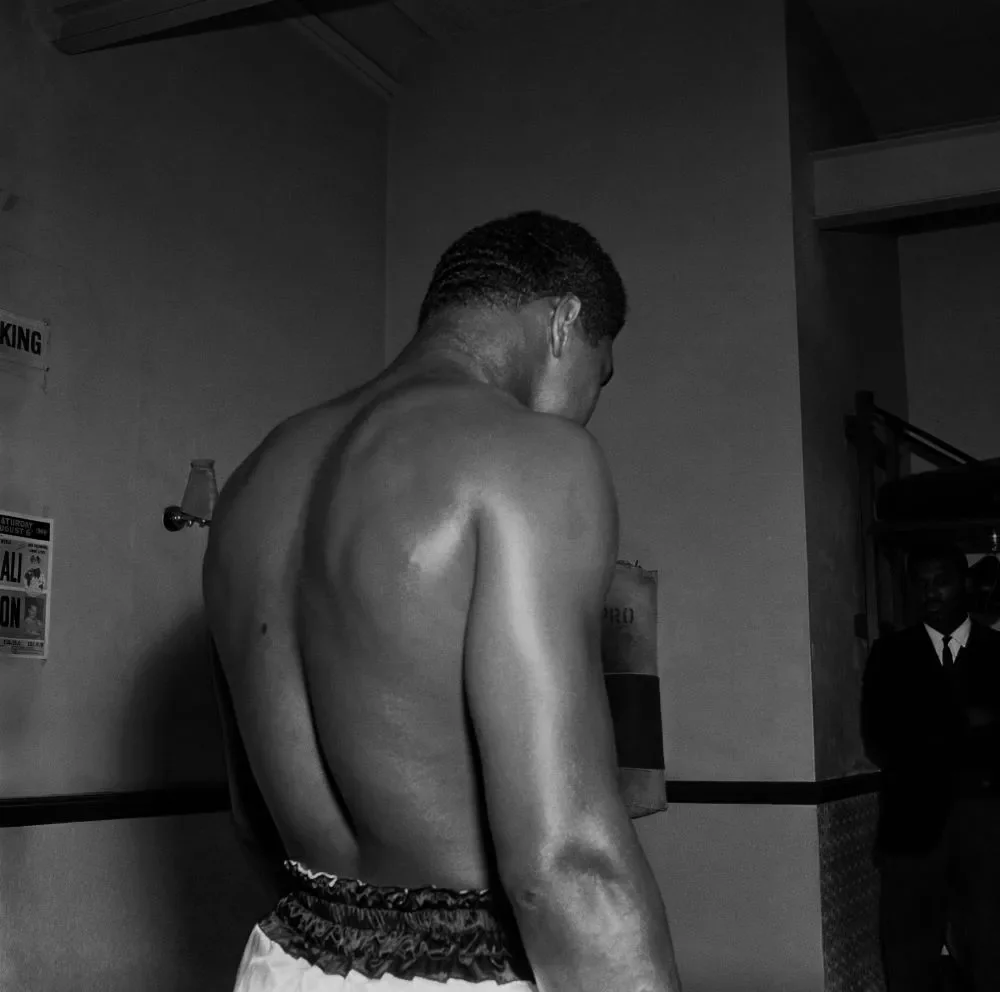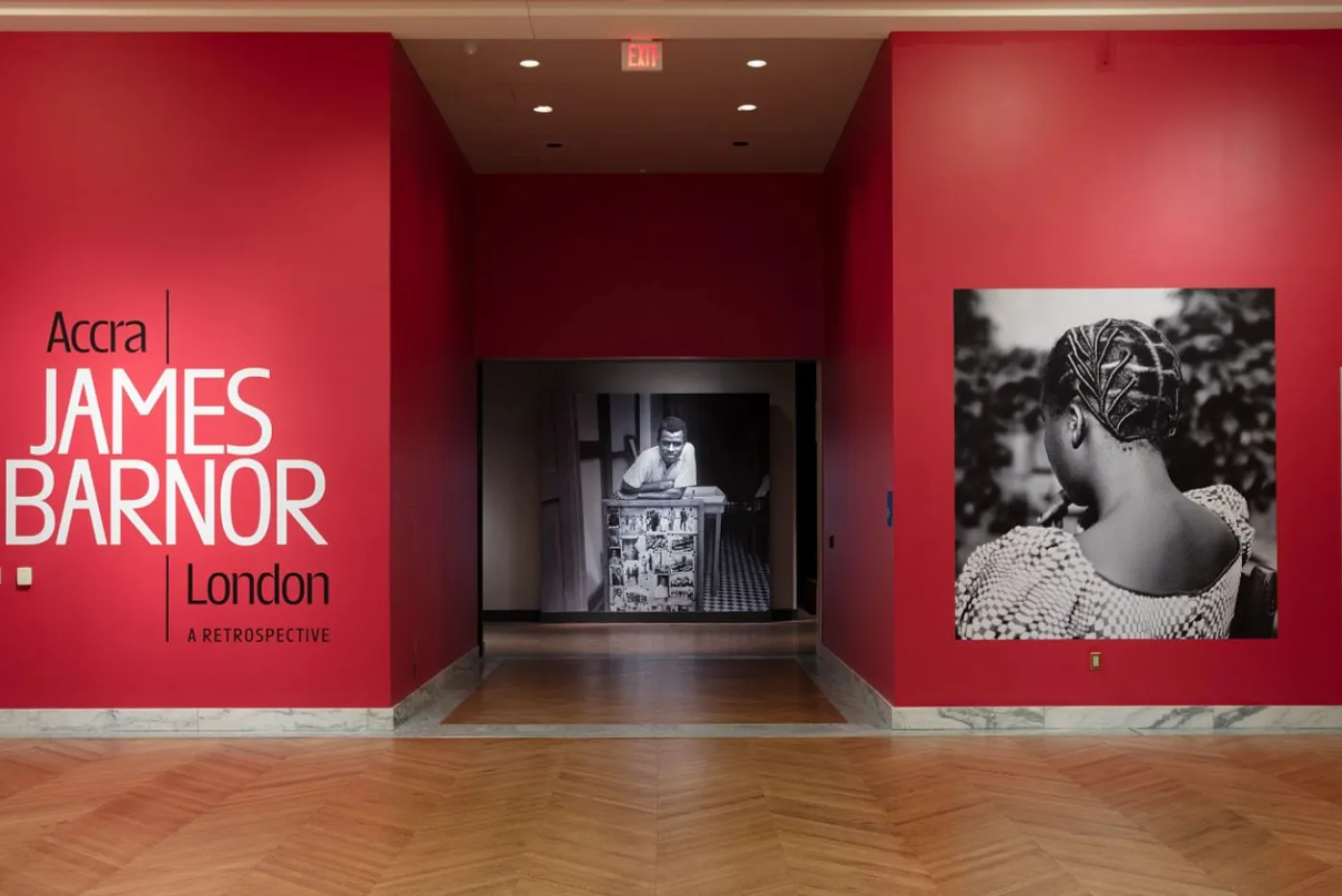James Barnor, who recently turned 94, lives in London, where the retrospective exhibition currently at the DIA was first shown, at the Serpentine Galleries. The Serpentine organized and launched this comprehensive and astounding look at the influential Ghanaian-born photographer’s long career documenting Ghana’s social and cultural history.
Barnor seemed destined to be a photographer. His family included many photographers, and he apprenticed under his cousin J. P. D. Dodoo before opening his own studio, called Ever Young, in Ghana’s capital the early 1950s. Ever Young was located in the Jamestown area of Accra, a busy and lively neighborhood, and Barnor found himself in the center of Ghana’s movement demanding independence from centuries of British rule. He described Ever Young as a community center, a hive of activity for people of all ages.
‘My studio was at a spot where everything happened in Accra, where young and old people met from various backgrounds, free to talk about everything and anything.’ —James Barnor
His studio work was mostly portraiture, but Barnor often took to the streets for candid shots, especially for his assignments for Ghana’s Daily Graphic newspaper. His knack for capturing a whole story in a single image led him to documenting much of the turmoil, historic moments, and key players in the lead-up to Ghana’s independence in 1957, when the country broke from the U.K. and Dr. Kwame Nkrumah was elected as its first prime minister. The dynamism and passion of that time shines through in Barnor’s images, throughout the DIA’s galleries.

James Barnor (Ghana, b. 1929). Kwame Nkrumah in his prison graduate cap, kicking a soccer ball before the start of an international match at Owusu Memorial Park, Fadama neighborhood, Accra, 1952 (printed 2010–20). Gelatin silver print. Autograph, London.
After one of his photographs was published in the Telegraph, Barnor was commissioned by U.K.-based Black Star Picture Agency and Drum magazine, a prominent publication that focused on the cultural and political developments of Africa and its diaspora. to photograph this time of significant historic transformation for a new nation, and the celebrations that drew people from all over the world.
‘I was the first newspaper photographer in Ghana, and I’m proud of that. Newspaper photography changed people’s lives and it changed journalism in Ghana. I was part of this moment.’ —James Barnor
Barnor moved to London to document the swinging Sixties there, and his images of the Black diaspora in the U.K. contributed significantly to that community and the larger culture. He continued to work for Drum, capturing street scenes, photographing a young Muhammad Ali before a fight, and shooting models of African descent including Erlin Ibreck and Marie Hallowi who were featured on Drum’s cover. Drum gave him a livelihood and a chance to create great images (which can be found in the DIA galleries) at a time when a Black photographer in the U.K. was not allowed much access to anything other than odd jobs.

James Barnor (Ghana, b. 1929). Muhammad Ali preparing for his fight against Brian London, 1966 (printed 2010–20). Gelatin silver print. Clementine de la Féronnière Gallery, Paris.
© James Barnor, courtesy Galerie Clémentine de la Féronnière, Paris.
‘You couldn’t get work in the 1960s as a Black photographer. It wouldn’t happen that a Black photographer would instruct white sitters [...] If you worked for a studio in London, you worked behind the scenes in the darkroom doing odd jobs. Drum though, where I did freelance work, was different. They let me photograph the cover girls, Muhammad Ali, Mike Eghan (the BBC presenter). Drum was my home in London, my office, I got everything done there.’ —James Barnor
In recent years, Barnor's work has received increased recognition and attention from the art world. His photographs have been exhibited internationally, including at the Serpentine Galleries in London where the exhibition originated. The DIA’s hosting of this retrospective marks Barnor’s first in the U.S. His work speaks to the power of photography as a storytelling medium, cultural preservation, and historical documentation. Through his lens, he captures the beauty, resilience, and diversity of African and diasporic communities, leaving a lasting impact on the world of photography. His work is widely known, but in small circles, and deserves a larger audience. The DIA is honored to be part of creating a wider audience for this remarkable artist.
While Barnor couldn’t be at the exhibition’s opening last month, he recorded this video to speak about some of his favorite images and his hope that visitors and staff come to know and enjoy his work.
Many thanks to Serpentine Galleries for the quotes and references in this post.
